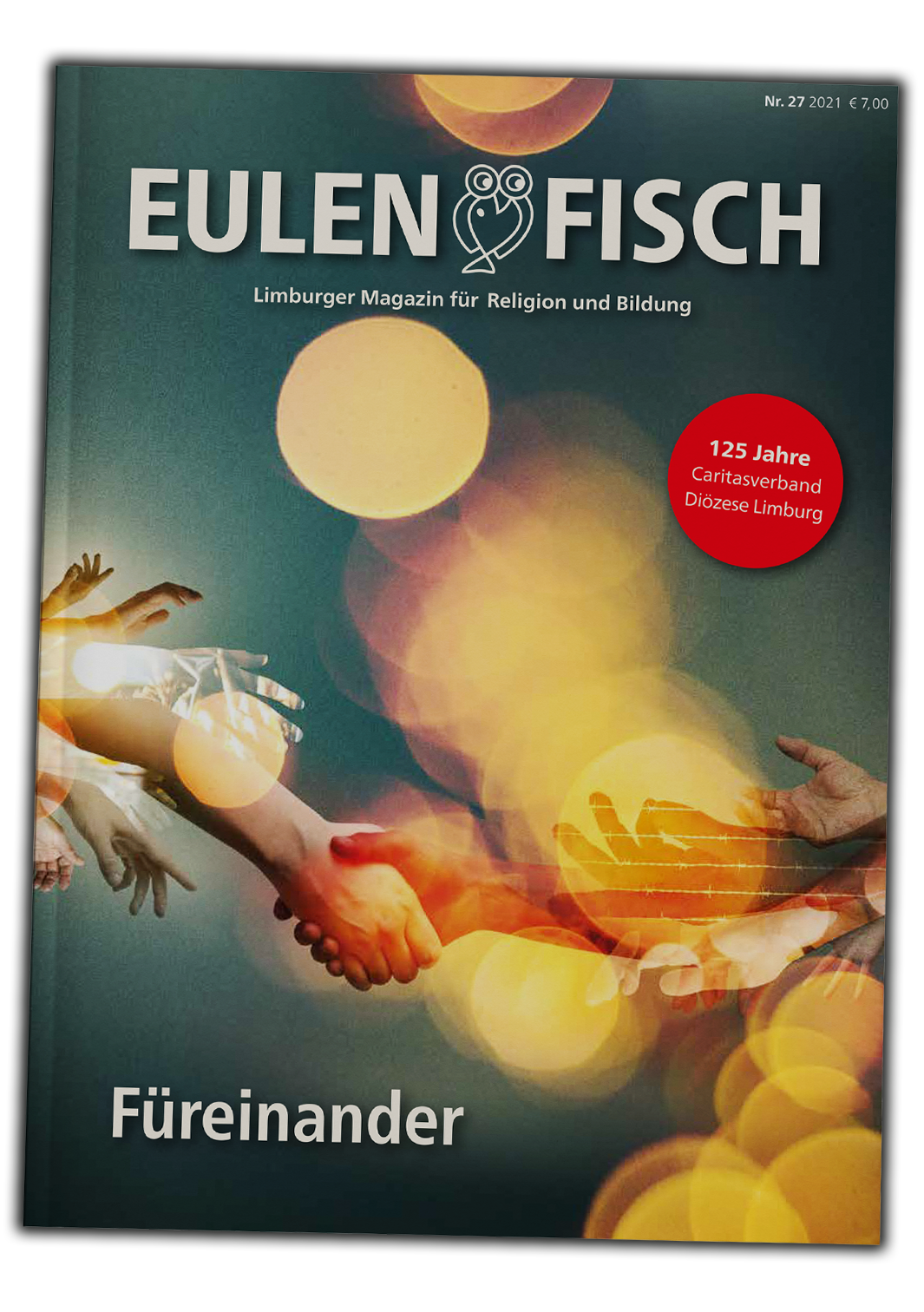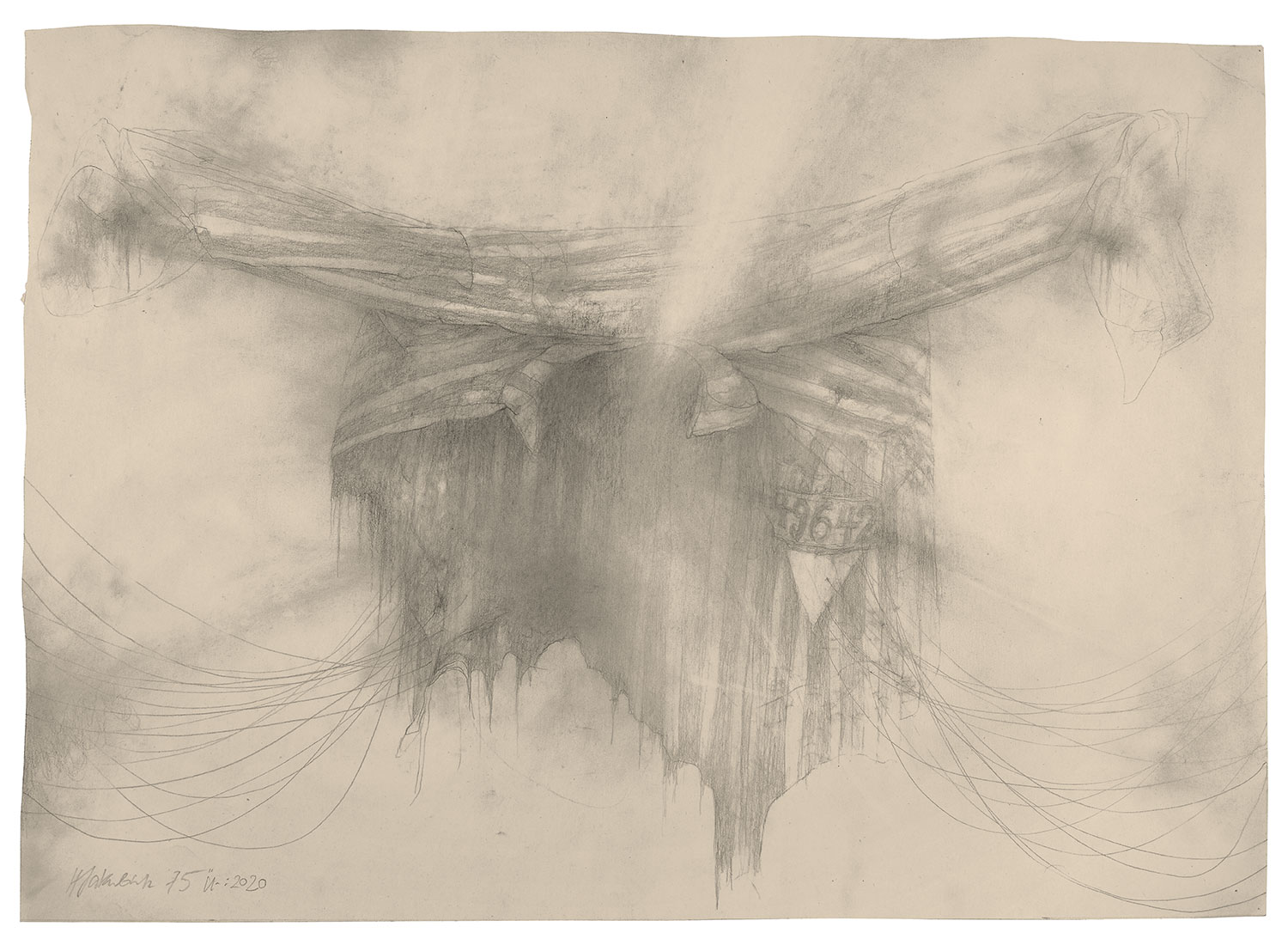Relic
by Horst Sakulowski (1975, revised 2020)
Graphite, 40 x 57,5 cm / annotations by Thomas Menges
Christian iconography knows countless depictions of martyrs. The torturers carry out their bloody evil work, but the innocent victims never lose their dignity because God has already set them right. There are still blood witnesses today; they are killed because they give their own lives for a common life in human dignity and freedom. An artistic epitaph can be erected to martyrs through a work of art that realistically depicts their suffering and attempts to rouse the viewer. Horst Sakulowski chooses a different path, creating a sur-realistic sheet with a graphite pencil. A jacket with longitudinal stripes floats in front of an indeterminate background. The stripes associate the prisoners' clothing in the National Socialist concentration camps. A breeze has inflated the prisoner's jacket. It is in a pitiful state of disintegration. The jacket collar, which encloses a dark, reclining oval, forms the centre of the picture. Above it are the two spread and slightly raised sleeves. Jacket and sleeves form the shape of a tau cross, which, however, has lost its corpus. The artist gives three discreet clues to the crucifixion of Jesus Christ: they are the two hatchings where the two sleeves are bent and the dark spot on the lower left of the jacket; they represent the stigmata on the hands and the stab in the side of Christ. But from whom is the shabby convict uniform a relic? The picture gives an unambiguous answer: on the outside of the right jacket there is a fabric tag with the number 49642. Who was this number assigned to? The name of the prisoner with the number 49642 is Richard Henkes (1900-1945). The Pallottine Fathers, who came from the Westerwald, also worked in Silesia, where he criticised Nazi ideology as anti-Christian in courageous sermons. He was arrested and taken to the Dachau concentration camp, where he had to do forced labour. When a typhus epidemic broke out there at the end of 1944, he had himself vaccinated and voluntarily locked up in a quarantine block so that he could assist the seriously ill and dying as a nurse and pastor. Richard Henkes became infected and died shortly before the liberation of the concentration camp. His ashes were buried in the Pallottine cemetery in Limburg shortly after the end of the war. His beatification took place on 17 September 2019 in Limburg Cathedral. September 2019 in Limburg Cathedral. Father Henkes, who wanted to work for the reconciliation of Germans and Czechs after the war, became an involuntary martyr. Horst Sakulowski, who struggled for a long time with the artistic design of the subject, did not want to create a realistic picture of, for example, a dying typhoid. Rather, he commemorated the sincere spiritual with a surreal memorial page. From outside the picture, a bright ray of light falls into the oval where the head of the priest should be; moreover, his jacket bears the stigmata of Christ. In this way, the draughtsman puts the divine confirmation of the stigmatised blood witness into the picture.
Virtual exhibition
Virtual 360° tour of the exhibitionStand by others
Horst Sakulowski's memorial sheet for the prisoner with the number 49642
by Thomas Menges
The suggestion from "outside", from interlocutors from the Limburg diocese, to deal with Blessed Richard Henkes can be adopted by Sakulowski because there are close connections in content to basic themes of his own work - such as following Christ and (Christian) resistance against fascism. For a long time he searched for an artistically adequate pictorial idea, for which he set himself a high standard. The author got to see some preliminary work, which Sakulowski admittedly did not find sufficient.
read article (german)

